-
Posts
6423 -
Joined
-
Last visited
Content Type
Profiles
Forums
Events
Posts posted by phant
-
-

Afghanistan Development progress
The Afghanistan map received extensive terrain mesh, normal maps, vegetation, ground texture, and other terrain improvements. In addition to Points of Interest (POI) areas around airfields and urban areas, the entire map has received a significant improvement in accuracy and realism, including from lower altitudes.
An important addition has been the inclusion of Forward Operating Bases Clark, Gardez, Thunder, Tellier, Camp Dubs, and Camp Julien. Additionally, the Patrol bases of Khost and Deysie combat outposts have also been added. These are now highlighted on the Mission Editor and F10 Map View with green triangles.
Other notable additions include the Mausoleum of Ahmad Shah Durrani, Kabul’s National Assembly, the Babur Garden, and the Kabul National Stadium. Many of the airbases also saw substantial improvement with more small and large object details, improved texture and lighting, and corrections to ramp and taxiway positions and AI logic. For a more detailed video report, please watch Matt “Wags” Wagner’s August 2025 Update video that discusses the update to the Afghanistan map and a dynamic campaign status report.

Bye
Phant -

Currenthill Assets Pack
The free Currenthill assets bring a rich lineup of modern and Cold War ground units and aircraft including:The first iteration of the Currenthill Assets Pack will contain:
- FV101 Scorpion Light Tank
- FV107 Scimitar CRV
- T-90A Main Battle Tank (MBT)
- T-90M MBT
- T-84 Oplot-M MBT
- T-64 Bv 2017 MBT
- M1130 Stryker Infantry Combat Vehicle
- M-ATV MRAP
- BMPT Terminator MBT support vehicle
- 9K720 Iskander SRBM (with 9M723K1)
- M142 GMLRS MRL (with M30A1/M31 GMLRS)
- M142 ATACMS MRL (with M39A1 ATACMS)
- Pantsir S1 SPAAGM (with 57E6)
- Tor M2 SHORAD (with 9M338)
- TOS-1A MRL (with MO.1.01.04M)
- M1083 MTV Truck
- IRIS-T SLM LN SAM (with IRIS-T SLM)
- IRIS-T SLM STR SAM
- IRIS-T SLM CP SAM
- Tu-95MS Bomber (with Kh-101 and Kh-555)
- Mi-28N Attack Helicopter (with Ataka and Igla)
- Project 22160 Patrol Ship with SA-15 (Tor-M2)
- Project 22160 Patrol Ship
Each Asset comes with:
- High resolution textures
- LODs for both model and destroyed model
- Custom sounds
- Animations
- Summer, desert and winter liveries
- FLIR textures
- Encyclopedia entries
- Combined Arms support except Tor M2 and Pantsir sensor and weapon control
These new units are part of our ongoing mission to improve the DCS battlefield to facilitate the creation of engaging and realistic missions and campaigns. As always, your feedback plays a critical role in guiding our work.

Bye
Phant -
-
-
Bye
Phant -
Bye
Phant -
Bye
Phant-
 1
1
-
-

Pacific Theatre of Operations 1944 Assets Pack Update
Since the release of the free DCS: Marianas WWII map and the Magnitude 3 DCS: F4U-1D Corsair, we want to provide an update on the extensive effort being devoted to bringing this scenario to life with the PTO Assets Pack. Learning from some of the European Theatre of War scenarios, the PTO scenario is focused on providing an extensive order of battle for both US and Imperial Japanese forces in the summer of 1944 and to offer an accurate representation of the battle for the Mariana Islands and the Battle of the Philippine Sea.
New player aircraft coming for this scenario will include both the F6F-3 Hellcat and the A6M5 Zero.
Since our last update on this project, we can now share with you the specific air, land, and sea units being developed for the PTO Assets Pack, which owners of the existing World War II Assets Pack will be able to purchase with a 30% discount:
PTO AI Assets:United States Aircraft
- F6F “Hellcat”
- SB2C “Helldiver”
- TBF “Avenger”
- SBD-5 “Dauntless”
- PBY “Catalina”
- P-38L “Lightning”
United States Ships
- Enterprise aircraft carrier
- Casablanca-class light aircraft carrier
- Independence-class light aircraft carrier
- New Orleans-class heavy cruiser
- Baltimore-class heavy cruiser
- Cleveland-class light cruiser
- Fletcher-class destroyer
- Liberty-class transport
- Cimmaron-class oiler
United States Ground Forces
- M4A2 Sherman
- M3A1 “Stuart” light tank
- LVT-4 tracked landing vehicle
- LVT(A)-4 tracked landing vehicle
- DUKW-353 amphibious truck
- US Marine Corp infantryman
- US Navy Carrier personnel
- US Navy seaman
Imperial Japanese Aircraft
- A6M5 “Zero”
- D4Y “Judy”
- D3A “Val”
- B6N “Jill”
Imperial Japan Ships
- Shokaku aircraft carrier
- Chitose light aircraft carrier
- Kongo battleship
- Mogami heavy cruiser
- Agano-class light cruiser
- Yugumo-class destroyer
- Kagero-class destroyer
- Kashino-class transport
Imperial Japanese Ground Forces
- Type 94 Tankette
- Type 95 Ha-Go tank
- Kurogane Type 95 car
- Type 97 Te-Ke tank
- Type 97 Chi-Ha tank
- Type 97 ShinHoTo tank
- Type 2 Ka-M amphibious tank
- Type 1 47mm anti-tank gun
- Type 98 20mm anti-aircraft gun
- Type 91 10cm towed artillery
- Type 92 70mm towed artillery
- Type 10 120mm anti-aircraft gun
- Imperial Japanese Army Infantryman
- Japan Navy seaman
Bye
Phant-
 1
1
-
-
Bye
Phant -
-

DCS: C-130J Coming soon
Get ready to step into the cockpit of the DCS: C-130J, the latest model of the most versatile military transport aircraft ever built. The C-130J puts you in command of the world’s celebrated tactical transporter, renowned for delivering troops, tanks, supplies, and lifesaving relief to hostile and war torn places. From engine start to wheels-up, every switch and system has been painstakingly recreated to let you haul and airdrop exactly as real C-130J crews do. The “Herc” is perfect for threading mountain valleys at 250 feet, skimming wave tops to deploy infantry, or heaving a 22-ton “MOAB” out the back ramp. The C-130J turns every sortie into a mission of muscle, precision, and pure aviator grit. Rally your crew, climb aboard and fly this iconic heavyweight.
Key features at early access:- Authentic Cargo Operations: Perform realistic cargo loading, management, and aerial delivery procedures. Conduct precision air-drops and logistical support missions showcasing the aircraft’s capabilities.
- MOAB: Yes. Make some noise !
- Interactive, Voiced Checklist System: Fully-voiced, interactive checklists guide you through every stage of flight operations that enhance immersion and procedural accuracy.
- First-Person Loadmaster Experience: Explore your aircraft in a novel, first-person mode that allows you to walk freely inside the cargo bay and around the exterior whilst interacting with aircraft systems and cargo. A first for DCS.
- Fully Interactive Cockpit: The detailed cockpit is fully interactive and features modern digital avionics, HUD, and accurate instrumentation. Each switch and gauge operates exactly as it would in the real aircraft.
- Realistic Flight Dynamics: The aircraft is modeled to closely replicate real-world performance. Conduct low-level tactical missions, precision cargo drops, and strategic airlift operations with realistic handling.
- Detailed Systems Simulation: Essential C-130J systems including the AE 2100D3 turboprop engines, advanced avionics, cargo management and defensive countermeasures are accurately simulated with realistic damage modeling.
- Multi-Crew Multiplayer: Collaborate with fellow crew in real-time multiplayer sessions. Share cockpit responsibilities, navigation tasks, and systems management seamlessly as a team.
- Dynamic Missions: Fly diverse mission profiles such as tactical deployments, covert special operations, or humanitarian aid flights; all of which highlight the operational versatility of the Super Hercules.
- Outstanding Visual Detail: Experience detailed modeling of aircraft interiors and exteriors, realistic textures, dynamic lighting, and immersive cockpit design.
- Comprehensive Documentation and Training: Detailed manuals, interactive training missions, and checklists ensure a thorough understanding of the aircraft that is suitable for both newcomers and experienced aviators.
Today, more than 20 nations rely on the Super Hercules for everything from special-operations infiltration to firefighting.
Pre-order Program
Available for a limited time at only $55.99
Pre-order
Please note that you can also purchase the DCS: C-130J directly from the Airplane Simulation Company website.
Development progress
From the Airplane Simulation Company:
What’s already done
Over the past year(s), we’ve completed the core flight-model, engine, APU, electrical, hydraulic, fuel systems, and avionic systems. The cargo bay is fully walkable in VR and flatscreen, with rigged physics for CDS bundles, and the GBU-43/B MOAB. Network-synchronised multi-crew is fully implemented for two players.
What we’re still doing
As we approach release, key focus points for the team include finalization of audio effects in the cargo bay, damage modeling, Levels Of Detail (LODs), integration of a 3rd multicrew slot, and the completion of a vehicle airdrop system in partnership with Eagle Dynamics. We’re also tuning parachute deployment mechanics, including introducing extraction chutes for heavy equipment airdrops, and physically simulated static lines.
Post Early Access Launch
Once the C-130J-30 is released, our focus will turn to the MC-130J. This variant, operated by AFSOC, brings aerial refueling capabilities, including player-to-player AAR in multiplayer. The MC variant also includes the AN/AAS-52(V) EO-IR pod, and a third crew station for the CSO, or combat systems officer.
We thank our community SMEs, test teams, Eagle Dynamics for their support, and every pilot eager to get those four fans of freedom turning. The Herc is rounding the corner, see you on the ramp soon!



Bye
Phant-
 2
2
-
-
-
-
Bye
Phant -
Bye
Phant -
-
Bye
Phant-
 1
1
-
-
Bye
Phant-
 1
1
-
-

SPO-15 Beryoza For the MiG-29A Fulcrum
The SPO-15LM for the DCS: MiG-29A Fulcrum module is built using a new physics-based approach. The system simulates a more realistic signal environment in order to ensure the most realistic behavior, algorithms, and limitations of the modelled SPO-15LM RWR system.
The new system comes with a radar database containing signatures and behaviors for each radar system in the game, including details like carrier frequency, waveform type and (if applicable) pulse train pattern for different operational modes, antenna and transmitter properties, search strategy depending on range and altitude of the target, signal variability, and CCM used etc. All of this information is used in two ways: to calculate accurate power density at the receiving antenna at each time step, taking into account the physical properties of the signal and the directivity pattern of the transmitter antenna, and to permit realistic modelling of the RWR system itself.
On the receiving end, the antenna and receiver properties are similarly taken into account in order to obtain a physically accurate estimate of received power. Each antenna and receiver channel is processed independently. This is critical for accurate modelling of the Soviet systems as they do not use amplitude comparison to estimate emitter azimuth; instead, each of the azimuth channels on the display corresponds to its own set of an antenna, a receiver, and initial processing hardware. As a result the coverage isn’t always 360 degrees. The antenna beamwidth varies with frequency and the antenna gain varies with azimuth and elevation, which causes the detection range and signal power for each emitter to vary not just with radar type and work mode (with the radar transmitter power and antenna gain being the deciding factor rather than its target detection performance) but also with orientation of the aircraft. The emitting antenna directivity pattern is also simulated, which means that, at low distance and high transmitting power, side lobes will be picked up and head-on emissions will bleed into receiving antenna side and back lobes blinding the device. Conversely at low signal power, the system develops blind zones all around the aircraft, and the RWR might fail to pick up the main lobe unless it passes directly over it. The unusual antenna coverage of SPO-15LM in particular requires the pilot to be aware of these blind zones during combat.
The improved simulation of signal propagation, together with attached signal signature (PRF, pulse width etc.) allow for accurate modelling of the signal processing algorithms used by the system. The SPO-15LM, while being an analog system, performs many tasks that are normally relegated to digital systems, and some of these analog systems use vastly different approaches compared even to early western systems, which leads to numerous quirks and limitations that are now accurately replicated. The most obvious, as already described, is how the threat azimuth is determined: The airspace around the aircraft is divided into eight azimuth channels covered by 10 azimuth antennas (with, notably, the two forward-facing antennas furthest off-nose on each side merged into a single processing channel), and two elevation channels covered by two elevation antennas. Each of these channels is processed separately with a fixed signal power threshold to activate each channel. The only time the signals are combined is to measure the signal power for the power level display (which now shows the actual signal power in 2 dB increments from threshold, rather than a simple function of range) and for the target priority algorithm. Lack of combined processing also means that coverage of each channel will vary with emitter power and frequency. The system features compensation systems, but they are crude and their effectiveness varies with signal power. The identification and target priority circuits also process each channel separately, meaning that in rare cases the same threat might even be interpreted differently in two neighboring channels, and two threats on opposite azimuths might both be interpreted as a single, main threat if the signals sync up.
The identification process involves measuring the repetition time and pulse width of the signal and sorting it into very broad PRF/PW bins. The measurement of PRT can fail if it’s not stable (e.g. due to jitter) making some radars impossible to identify. The presence of multiple emitters in the same sector will also interfere with this process. Even if this part succeeds, the low number of signal parameter bins means that the system might still assign the wrong type to the threat if the signal parameters are close enough. The system is also able to separate Continuous Wave (CW) signals from pulsed signals, and to interpret colocated CW and pulsed emitters as a single emitter in Semi-Active Radar Homing (SARH) guidance mode; it cannot however distinguish between different CW radar types, meaning this feature is susceptible to false alarm. Pilots thus need to be weary of the fact that the system will not always be able to accurately identify the threat type. To improve usability of the system, the threat program is generated automatically based on known threats present in the mission and is provided in the kneeboard for every flight - in reality, the threat program cartridge was issued to units based on the threats present in the combat theatre, and was not designed to be field reprogrammable. The friendly emitters are not included in the program, but they might still be falsely identified as hostile for reasons described above. The system also has an ability to sort the signals into 2 bins by carrier frequency, however in the MiG-29 this feature is permanently disabled, as it requires each sub-band to be scanned separately, reducing probability of detection against radars in search mode (the MiG-29 lacks the full control panel which would allow this function to be switched on and off).
The target priority circuit is similarly modelled with its limitations. For instance, the system takes flight altitude into account for the priority algorithm, but it has to be entered manually. In the MiG-29 in particular it is forced to a high setting (8-16 km) without any way to adjust it, meaning, Short Range Air Defense (SHORAD) systems are always treated as low priority. The system will also prioritize radars in track mode over search mode. But again, track mode is recognized entirely by the length of the illumination event being above a certain threshold, so at high signal power emitter side lobes might falsely trigger the track warning. For the priority threat, the system displays the signal power (as well as the highest estimate of weapon range for the given type in terms of equivalent signal power) and the elevation - the latter only being available at high signal power due to much lower sensitivity of the elevation channels.

Bye
Phant-
 1
1
-
-

Cold War Germany Updates coming soon
Ugra-Media’s upcoming update will focus on polish and immersion. Several navigation aids will have corrected identifiers like the Frankfurt VORTAC and Northeim and Walldorf airfields broadcasting their proper callsigns. City names for Weißenfels and Gießen have been corrected, and the F10 map sports resized/repositioned prepared SAM sites, radar, and hospital map icons for faster mission creation and planning. You will notice more realistic destruction effects for industrial plants and power stations, a new damage model for stadiums, and improved fields with hay bales and tractors. Typical village churches will have more accurate heights to improve visual low-level navigation. These refinements move the terrain one step closer to Phase 2 in which it will be expanded further. Please stay tuned for the next update to enjoy these updates.

Bye
Phant-
 1
1
-
-
-
Bye
Phant




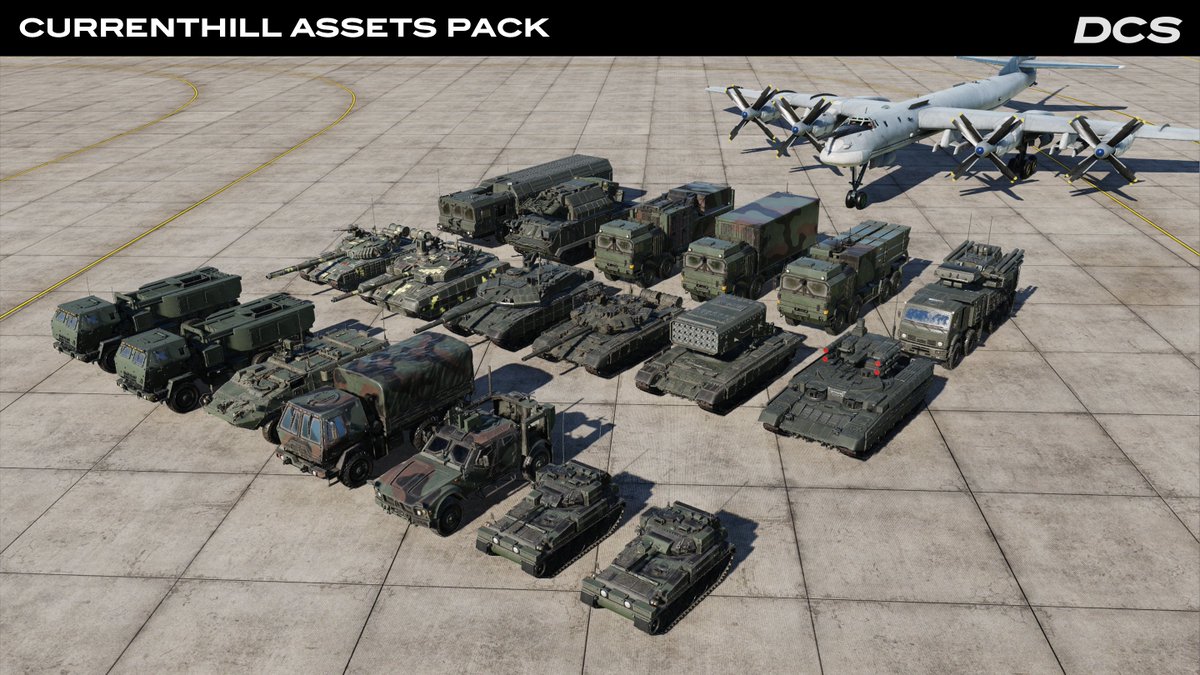
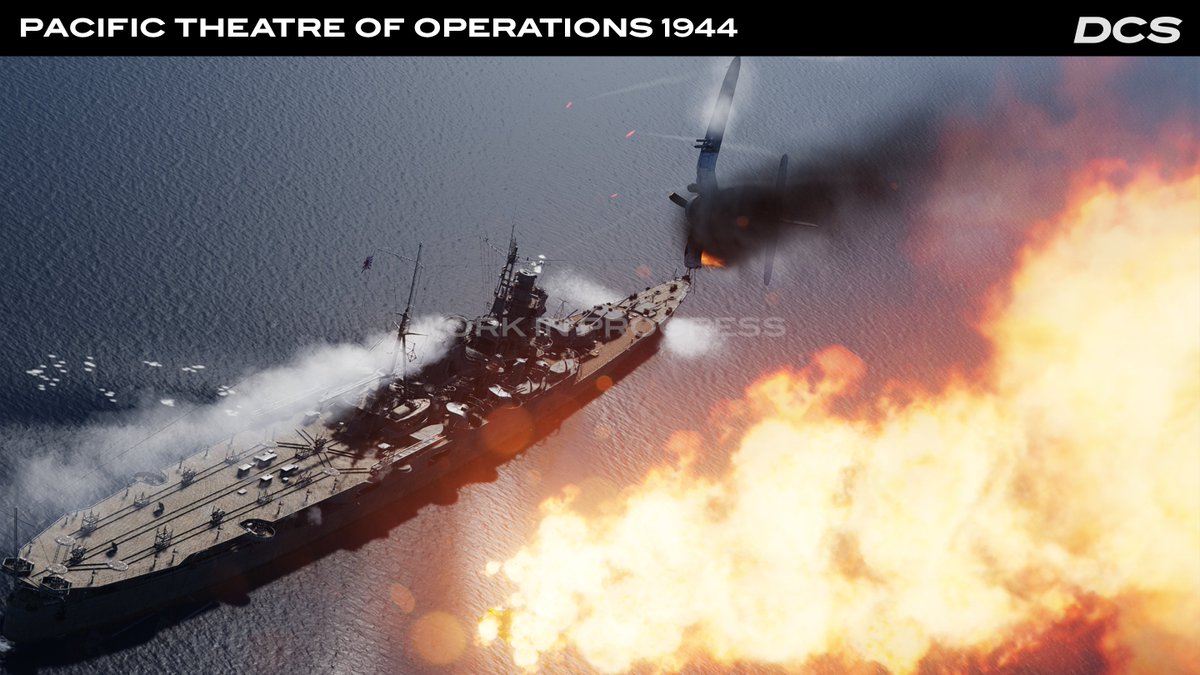
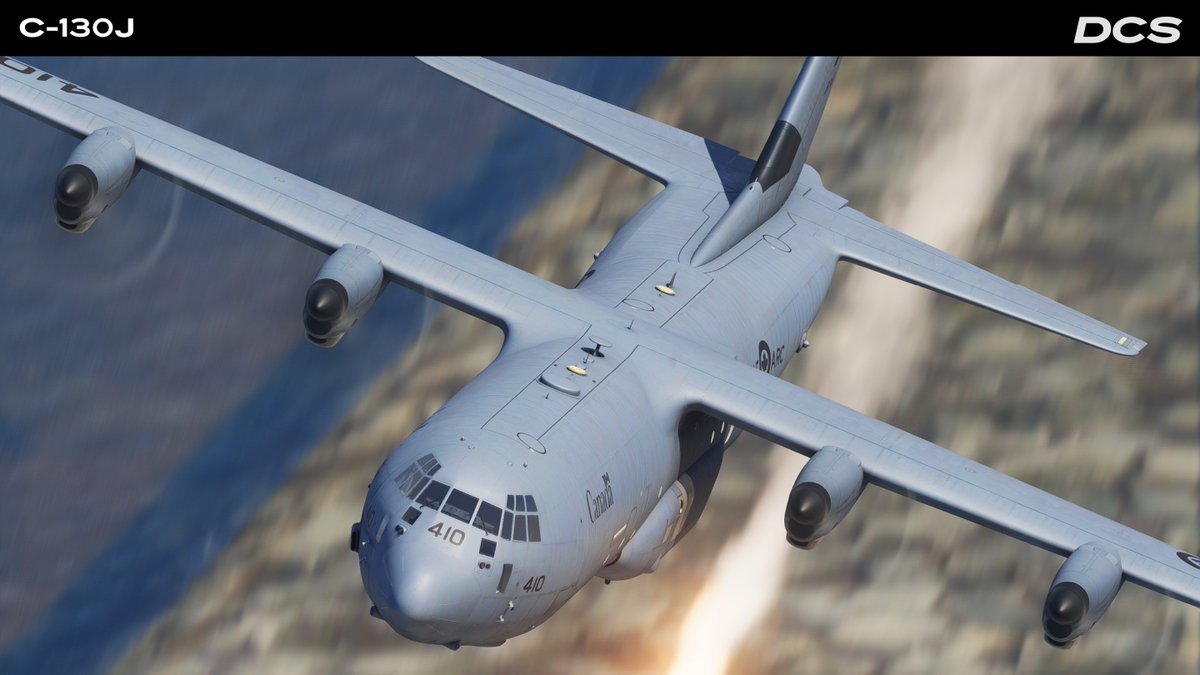
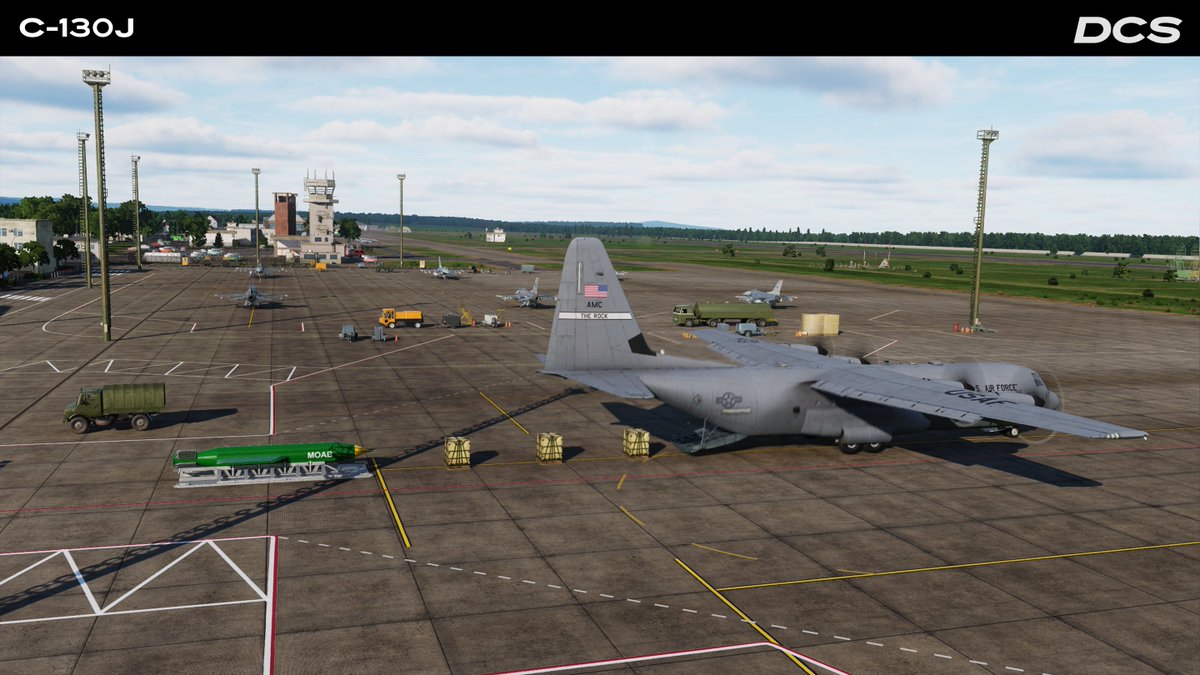
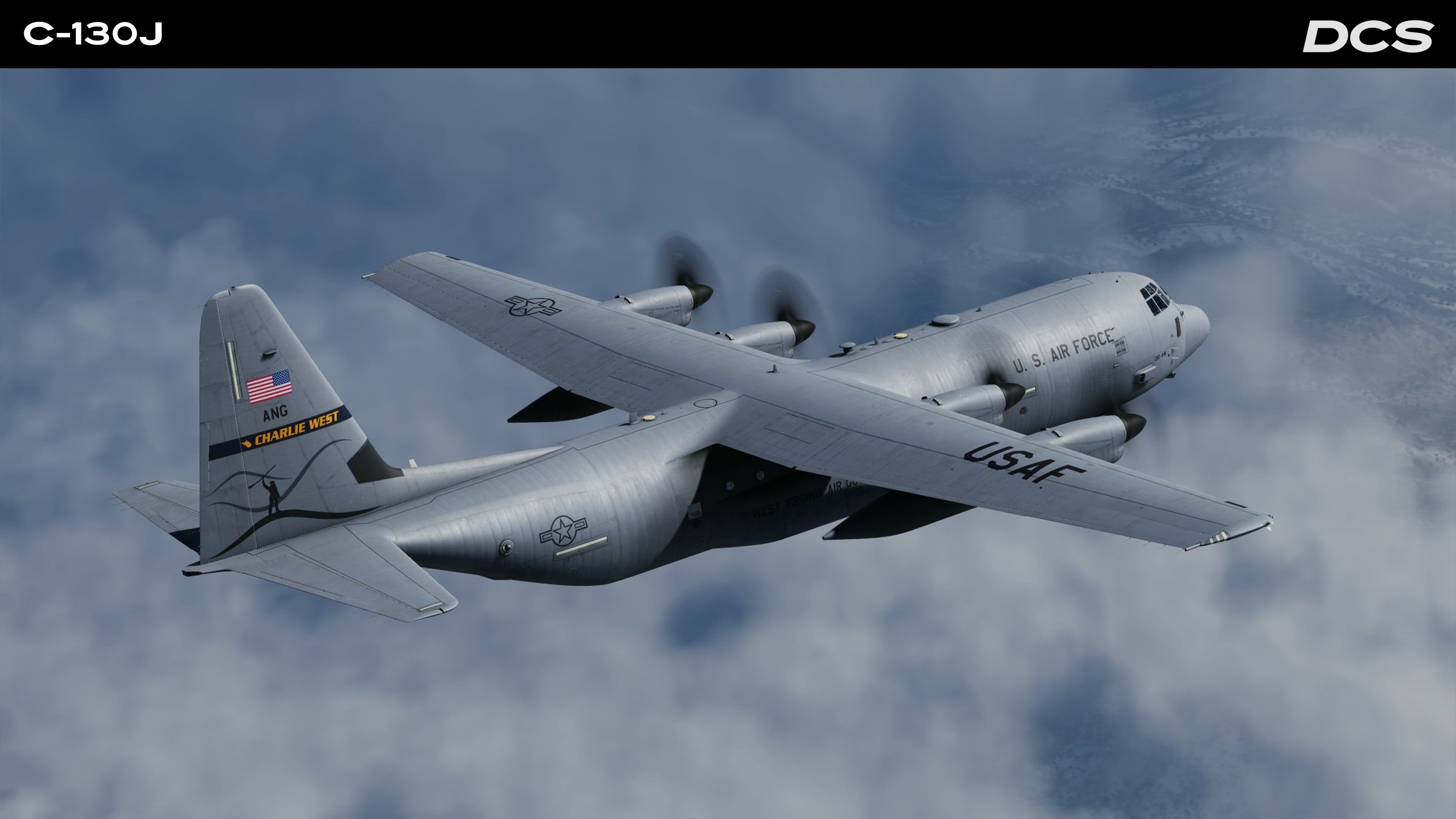
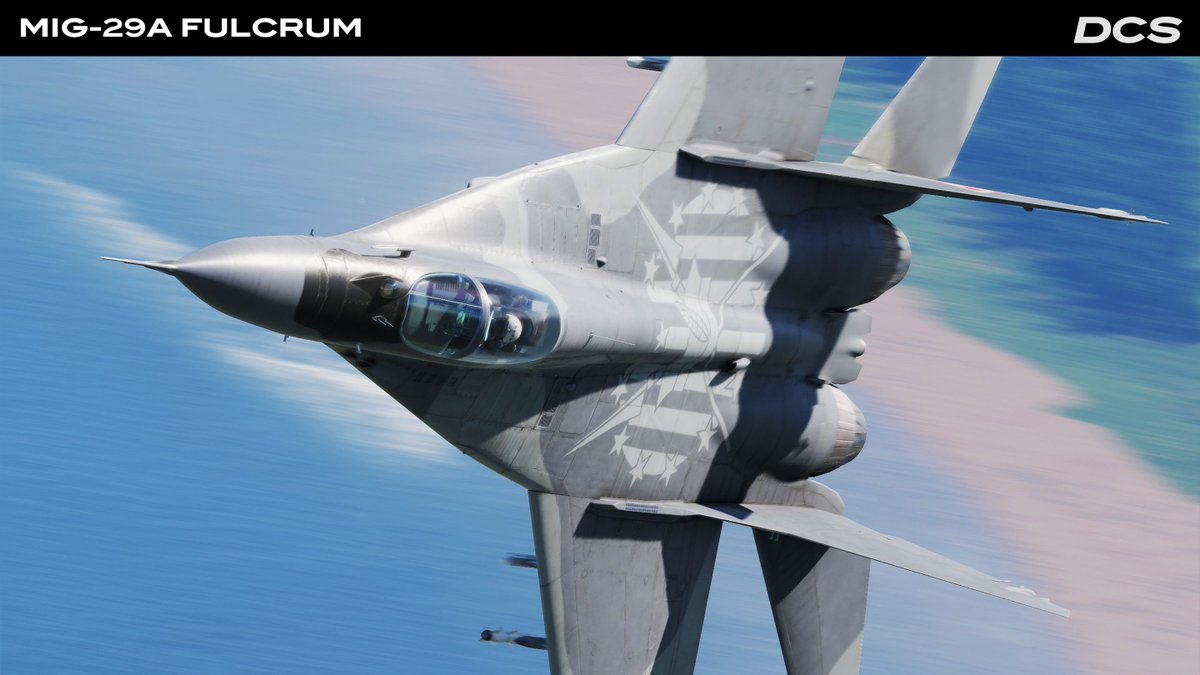
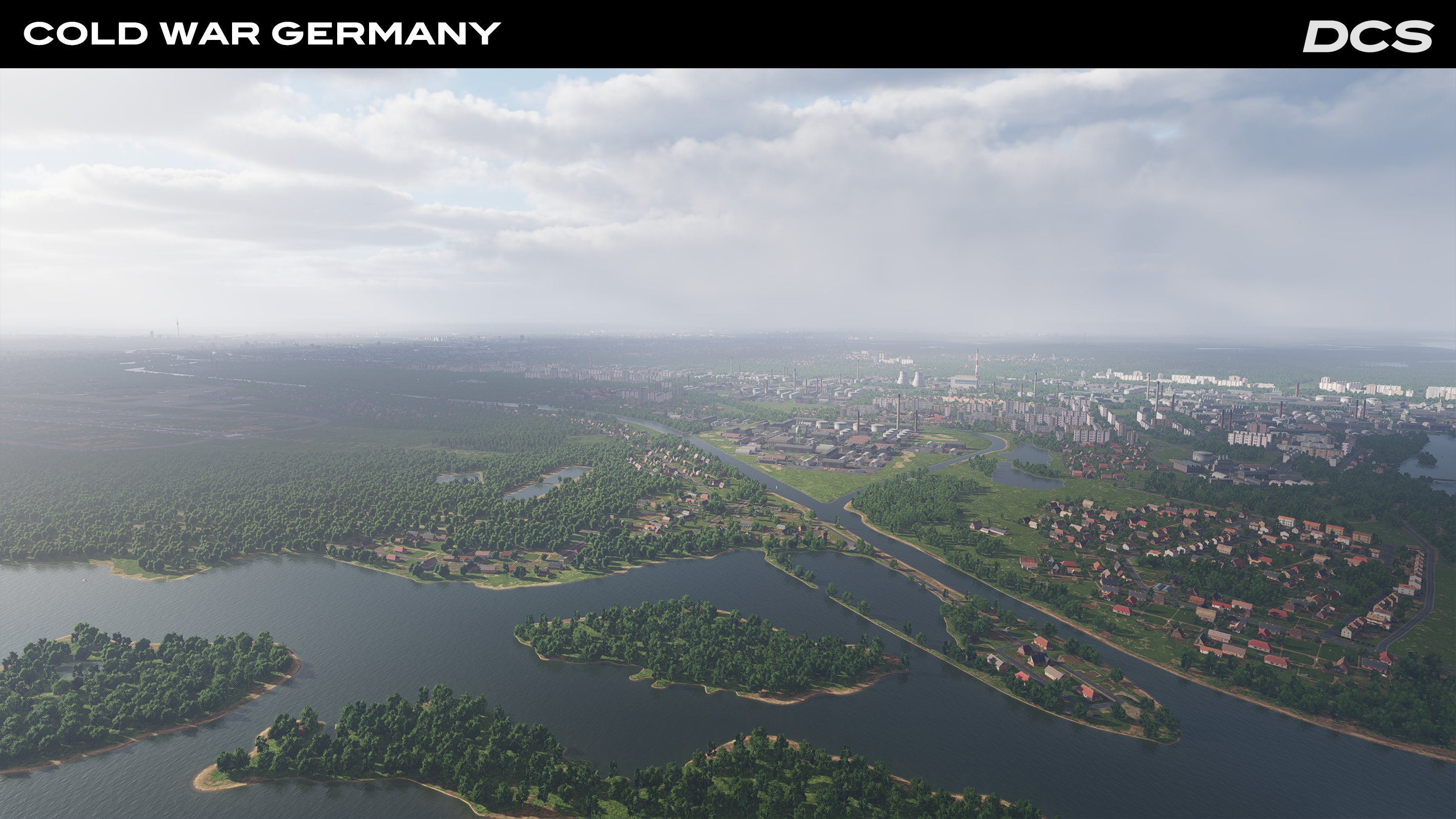
DCS: F-100D Super Sabre by Grinnelli Designs
in Italian
Posted
DCS F-100D Super Sabre: Flight Model and Methodology 2
Bye
Phant